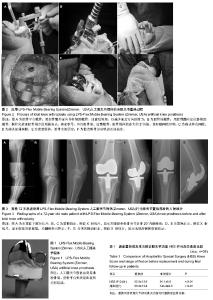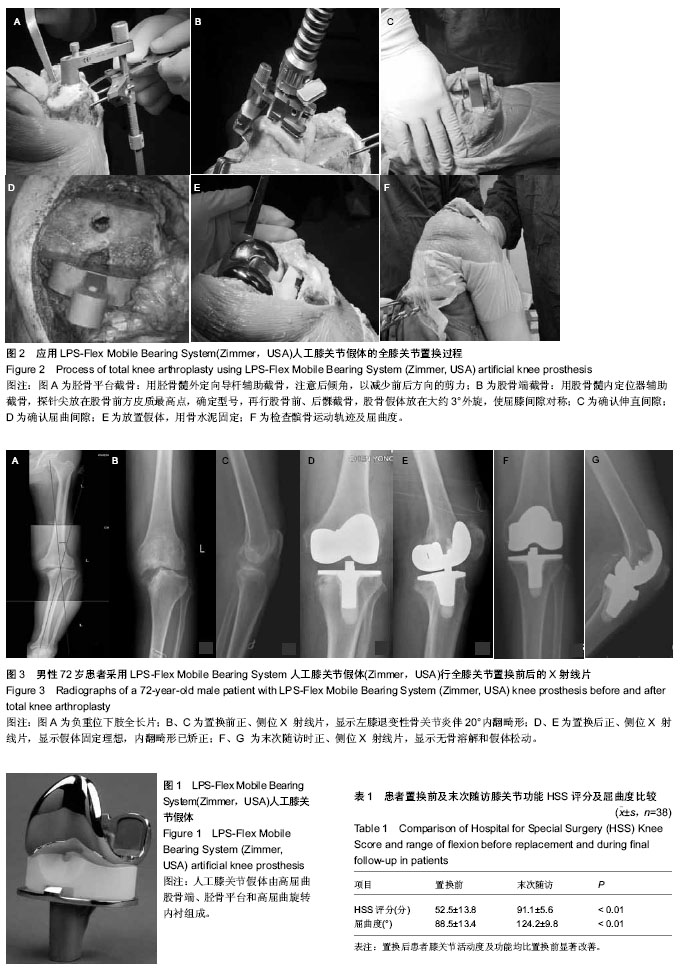| [1] |
Liu Jianyou, Jia Zhongwei, Niu Jiawei, Cao Xinjie, Zhang Dong, Wei Jie.
A new method for measuring the anteversion angle of the femoral neck by constructing the three-dimensional digital model of the femur
[J]. Chinese Journal of Tissue Engineering Research, 2021, 25(24): 3779-3783.
|
| [2] |
Pu Xingyu, Luo Wenyuan, Qian Yaowen, Cai Liyang, Zhang Chao, Chen Shaolong, Wang Yue, Zhang Wei .
Unicompartmental knee arthroplasty for medial compartmental knee osteoarthritis in young and middle-aged patients: a short-term follow-up
[J]. Chinese Journal of Tissue Engineering Research, 2019, 23(8): 1161-1166.
|
| [3] |
Chen Xiaokang, Wu Zhengjie, Zhou Bingxue, Zhou Jiansheng, Hong Shi.
Semi-restrictive total elbow arthroplasty for complex distal humeral fractures in the older adults: one-year follow-up
[J]. Chinese Journal of Tissue Engineering Research, 2019, 23(8): 1168-1171.
|
| [4] |
Shi Junheng, Zhong Degui, Fan Zhirong, Huang Yongquan.
Posterior cruciate-retaining versus posterior cruciate-stabilized prostheses for total knee arthroplasty: a meta-analysis
[J]. Chinese Journal of Tissue Engineering Research, 2019, 23(8): 1282-1290.
|
| [5] |
Hao Liang, Zhang Zhonglin, Wang Baodong, Bi Zhenggang.
Intertrochanteric fracture of the femur: improvement of internal fixation device, surgical changes and related disputes
[J]. Chinese Journal of Tissue Engineering Research, 2019, 23(18): 2927-2935.
|
| [6] |
Gong Zhibing, Wu Zhaoke, Zhang Huantang, Xu Zhiqing, Zhuang Zhikun, Zhang Qianjin.
Allogeneic cortical bone plate combined with locking plate for Vancouver type B1 and C osteoporotic periprosthetic femoral fractures after hip arthroplasty in older adults
[J]. Chinese Journal of Tissue Engineering Research, 2019, 23(12): 1812-1817.
|
| [7] |
Gu Jianhua, Shi Zhicai .
Placement position of artificial vertebral pedicle screws based on the anatomical structure of lumbar nerve roots
[J]. Chinese Journal of Tissue Engineering Research, 2019, 23(12): 1829-1833.
|
| [8] |
Gao Yi, Qu Yu-xing, Zhou Qi, Wang Bin, Zheng Chong, Luo Li-li.
Comparison of the stability of direct anterior approach versus posterolateral approach in minimally invasive total hip arthroplasty
[J]. Chinese Journal of Tissue Engineering Research, 2018, 22(7): 997-1002.
|
| [9] |
Li Gang, Wang Yue.
Short-term outcomes of displaced femoral neck fractures treated with hemiarthroplasty using direct anterior approach
[J]. Chinese Journal of Tissue Engineering Research, 2018, 22(7): 1014-1019.
|
| [10] |
Zhou Chi, He Wei, Liu Yuhao, Guo Hai, Tang Hongyu, Zhang Gangyu, Wang Haibin.
Factors related to the fragmentation of ceramic components after fourth-generation ceramic-on-ceramic total hip arthroplasty
[J]. Chinese Journal of Tissue Engineering Research, 2018, 22(35): 5577-5582.
|
| [11] |
Zhao Min-chao, Huang Yan, Yuan Wei-jian, Chi Yu-fei, Li Zu-hao, Wu Han.
Application of three-dimensional printing metal implants in orthopedics
[J]. Chinese Journal of Tissue Engineering Research, 2018, 22(31): 5027-5033.
|
| [12] |
Yu Qiang, Tian Jing.
Application of antibiotic-loaded cement spacers in two-stage revision for periprosthetic joint infection after total knee arthroplasty
[J]. Chinese Journal of Tissue Engineering Research, 2018, 22(31): 5048-5055.
|
| [13] |
Chen Guan-hong, Qin Lei, Huang Hui, Wang Zhan, Ma Jia-chao, Xu Ying, Zhai Xi-cheng.
Intravenous versus articular injection of tranexamic acid for reducing hemorrhage after unilateral total knee arthroplasty
[J]. Chinese Journal of Tissue Engineering Research, 2018, 22(3): 350-355.
|
| [14] |
Hu Wen-hao.
Efficacy of intravenous versus topical administration of tranexanmic acid in primary total knee arthroplasty
[J]. Chinese Journal of Tissue Engineering Research, 2018, 22(3): 356-361.
|
| [15] |
Xu Jun, Xie Lin.
Artificial ankle arthroplasty versus ankle joint fusion for traumatic ankle arthritis: efficacy and safety
[J]. Chinese Journal of Tissue Engineering Research, 2018, 22(3): 368-373.
|

